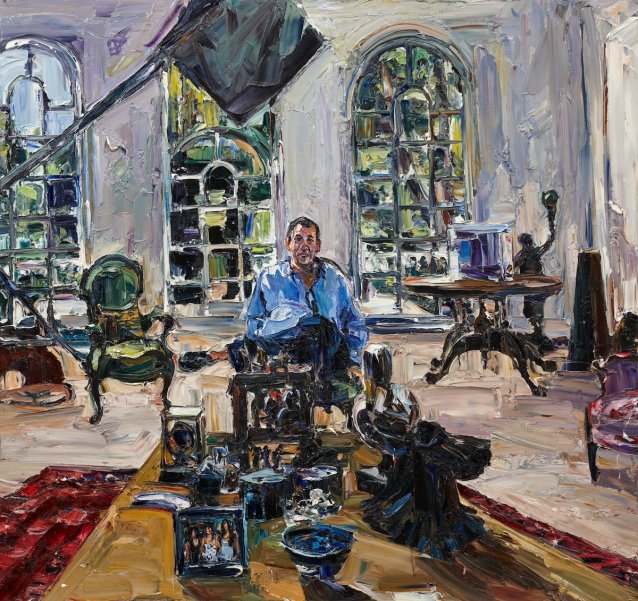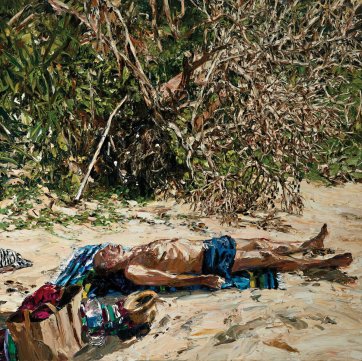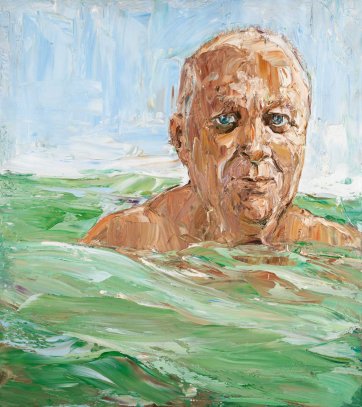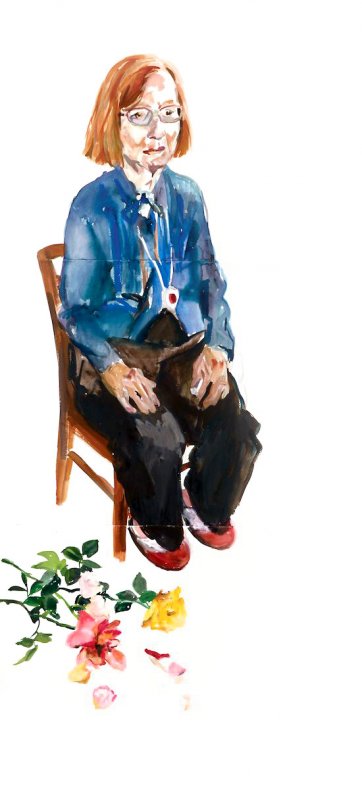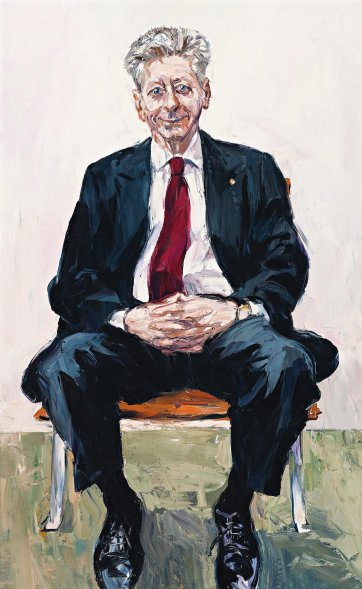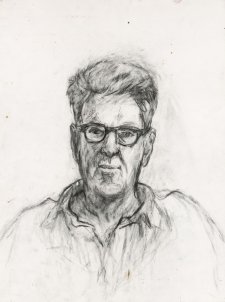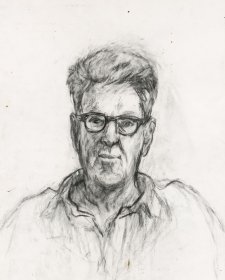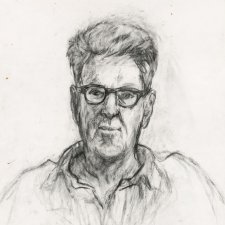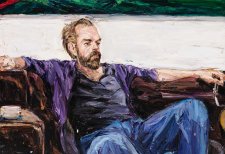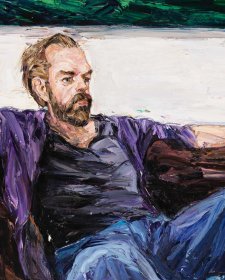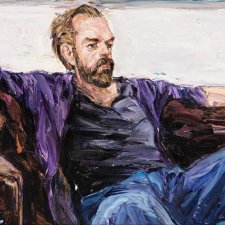oil on linen
132x140cm
Collection of John Feitelson, Sydney
Courtesy of Olsen Sydney
John Feitelson, an investor, grew up in Cape Town, South Africa, where his parents collected art. Having settled in the eastern suburbs of Sydney in 1992, he began haunting Rex Irwin’s gallery in Woollahra, and in the mid-1990s he purchased big drawings by Harding of run-down parts of the inner city. In due course, he and his wife, Roslyn, commissioned a portrait. They lived in Bellevue Hill, in a pocket mansion created by the architect F Glynn Gilling in the first half of the twentieth century. By the time Harding came to the house to start work on the portrait, Roslyn, a much-loved charity fundraiser, had been diagnosed with cancer. Harding set down some drawings and went away to work on the portrait in his studio. By the time it was completed, Roslyn had died. The empty green chair is symbolic of her; but in addition, Feitelson asked the artist to include a photograph of her with their twin daughters Samantha and Lauren. When Feitelson sold the house, the portrait was put in storage. Looking at it after some years, he was struck by the power with which it evoked that time and place, and particularly by how Harding represented the light that came through the uneven glass of the old windows.
The large black structure thrusting into the top left quadrant is an art lamp, under which is a red steel sculpture by Russell McQuilty. On the table atop a Persian rug, an Atmos clock sits on the left, directly in line with Feitelson’s foot. In front of him is a maquette for a sculpture by Anne Ross. To its right, facing the sitter, is a Bruce Arnott sculpture with the head and chest of a woman but the body of a duck. Obscuring the ‘duck’s’ tail is a small copper form of an empty dress with a ruffled skirt. On the table is a sculpture by Campbell Robertson-Swann. ‘Outside’ the central window arch is a black sculpture, again by Robertson-Swann. ‘Through’ the right hand window are a tree and a section of white concrete balustrade, a characteristic feature of one of Gilling’s Hollywood-Spanish-style architectural follies.
